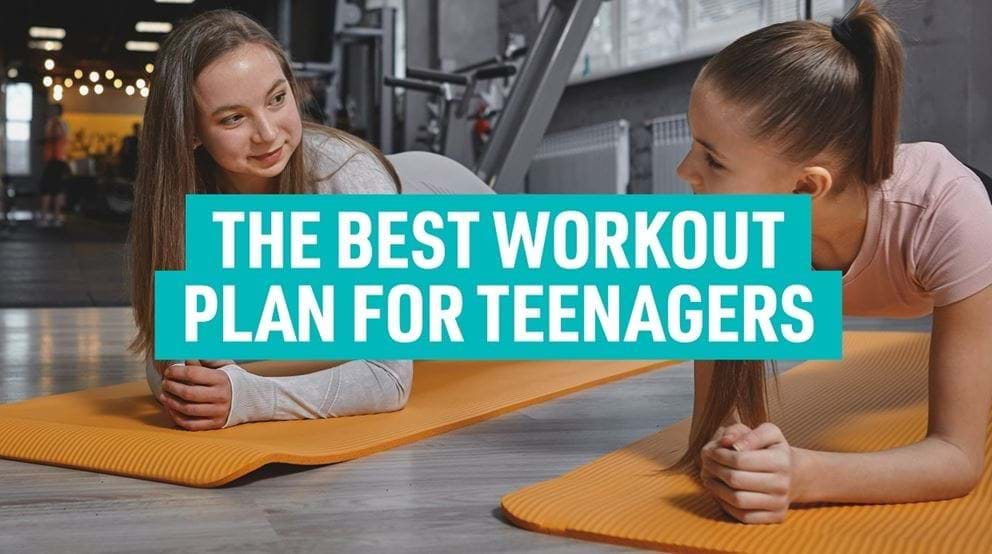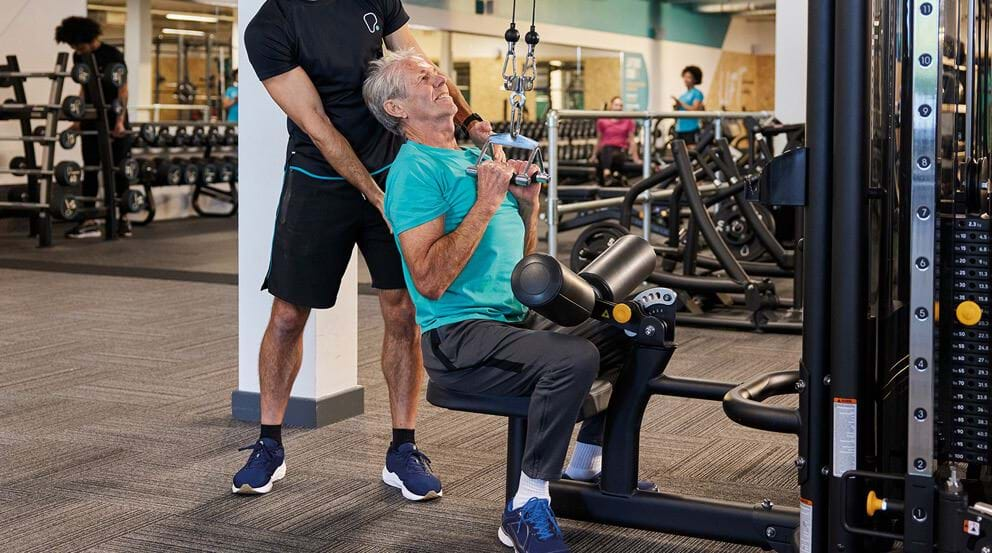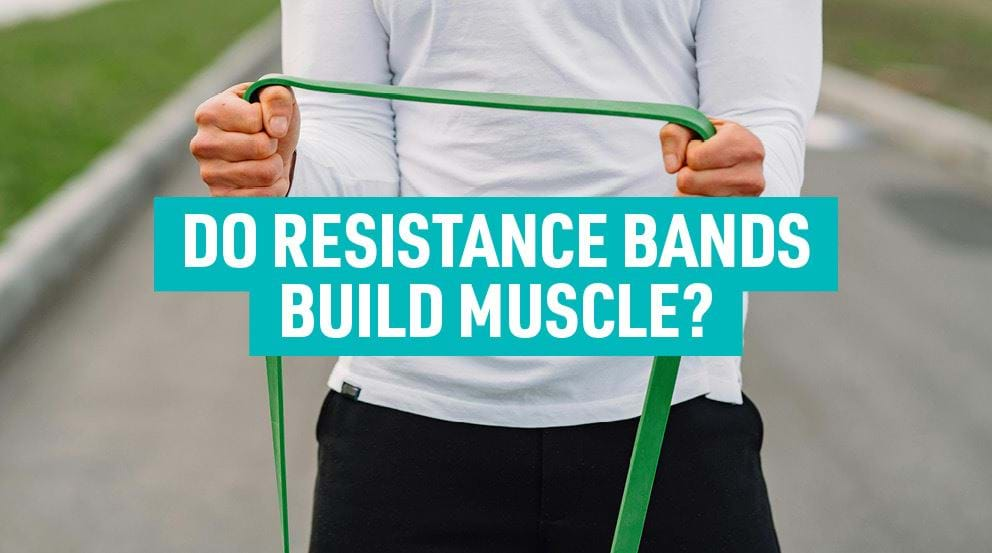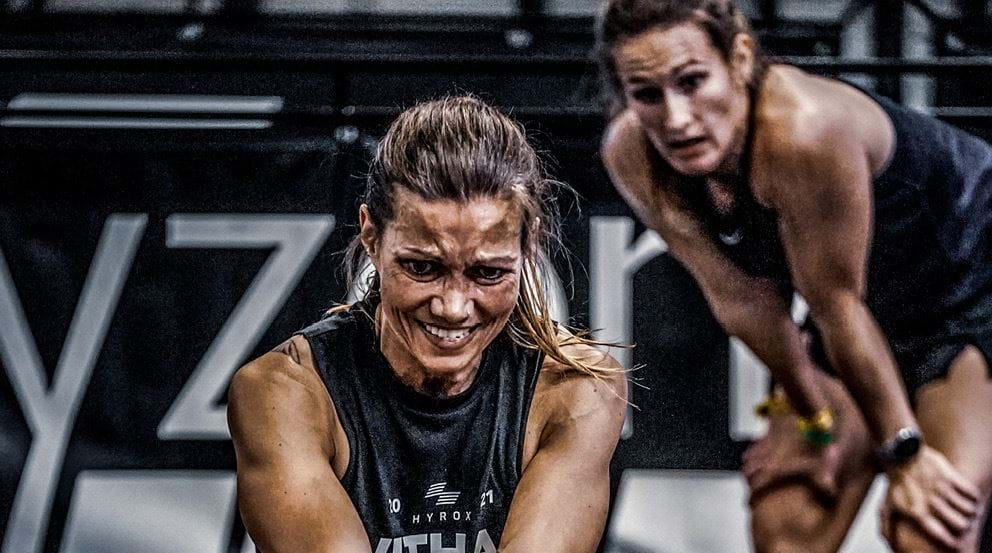The Best Workout Plans for Teenagers

Benefits Of Workouts For Teens | Best Age To Start At The Gym | How Often To Work Out? | Workout Plans For Teens | Home Teen Workout | Beginner Gym Workout | Intermediate Gym Workout
As teenagers, the transition from childhood to adulthood means both the body and mind undergo significant changes, all of which can impact how we develop as we get older. Engaging in regular physical activity during this crucial phase can set the stage for a lifetime of good health. From building strength and cardiovascular fitness to maintaining a healthy weight and bolstering mental health, exercise plays a pivotal role in shaping a positive adolescence.
Here, Sunny Deo, PureGym Leicester Walnut Street based Personal Trainer who has a degree in Psychology and Sports Education as well as a national diploma in Sport Development, Coaching, and Fitness, and is also a FA Level 1 Football Coach with experience coaching children, delves into the world of teenage fitness, exploring the reasons why it matters, how to do it safely and a selection of age-appropriate teen workout plans for different skill and confidence levels.
Should Teenagers Work Out?
Yes, teenagers can and should work out, as long as they do so in a safe and age-appropriate way. Sports and exercise are incredibly beneficial for teenagers, as staying active can help to:
Build strength: As teens start to get older, it's important to grow stronger - this supports healthier bones and muscles, meaning better posture and stability and a lower risk of issues like osteoporosis or fractures later in life.
Increase cardiovascular fitness: Cardio fitness is one of the keys to a healthy heart and circulatory system and can help reduce the risk of many illnesses later in life. Getting into good habits early on and enjoying the endorphin thrill of cardio can boost health throughout our whole adulthood.
Maintain a healthy weight: Studies have shown that at just age 14, one in five are obese and one in seven are overweight. Participation in sports and exercise can help with weight control by increasing activity levels and boosting metabolism.
Improved mental well-being: Approximately one in four people in the UK will experience a mental health problem each year. Research conducted by the Department of Sports at Kunming University of Science and Technology has shown that exercise can help to relieve tension, reduce anxiety and even ease depression. This has led to teenagers having improved self-esteem and self-confidence, which in turn helps with cultivating their interpersonal skills - an essential skill to have when transitioning to adulthood.
Aid better sleep: Studies have shown that a good night's sleep for teenagers is between 9 to 9 ½ hours, which helps fuel the body as it's going through major developmental changes. Staying active during the day often makes it easier to get a good night's sleep (this is discussed in more detail over on the sleep and gym guide here), and a solid overnight rest also helps teens to be more active during the day - it's win-win!
Increase social interaction: Sports and fitness group activities provide opportunities for teenagers of all ages to socialise and build relationships with peers, whether that's after-school clubs or university sports teams. It's a great way to make new friends and build a community while also staying fit.
Boost academic performance: Research has shown a correlation between fitness levels, blood pressure, sleep levels and academic performance, with studies showing those with lower academic performance were generally less healthy in those metrics. So keeping fit, and getting a better night's sleep will not only make you feel great, but can help you perform better at school, college or uni too.
At What Age Can Teenagers Work Out At The Gym?
It's important to make sure teens are physically ready to work out at the gym before planning any gym-based fitness schedule. This is why here at PureGym we will only allow young people over the age of 16 to become members at our gyms.
For younger teens, unless you're training for specific athletic or sporting goals, physical development and fitness can generally come from a range of age-appropriate school and extracurricular activities, rather than from training programmes at the gym. Whether it's PE class, after-school clubs, cycling, hiking or dancing with your friends, there are many ways to stay fit and well without heading to the gym. In the younger stages of adolescence, intense weightlifting or high impact exercises at the gym could actually pose a risk to younger bones and joints, as they may not have built up the strength and correct form to complete many exercises safely. For more about weight training at a younger age (with tips) check out our Can Weightlifting Stunt Your Growth guide.
However, older teens of around 16 and above can start considering training at the gym, as long as they've reached a stage of physical maturity where they can perform exercises without risking injury to growing bones and joints. Even then, programmes should focus on a well-rounded, age-appropriate approach, including strength, cardiovascular fitness, flexibility and core stability.
How Many Days A Week Should A Teenager Work Out?
The NHS recommends that young people and teenagers engage in moderate to vigorous physical activity for 60 minutes every day, ideally including a mix of aerobic and strengthening exercises. This can include everything from walking to school, swimming, gymnastics, dancing and cycling, through to sports or gym workouts such as resistance training and classes.
Ideally, a workout schedule for teenagers will involve a variety of different styles and types of activities, to help the body develop a range of muscles, skills and abilities. Over the week, this could look like 1-2 days playing sports, 1-2 days strength training, and 1-2 cardio, on top of daily activity like walking.
The Best Workout Plans For Teens
Whether you're just getting started at the gym, are more confident with your form and strength, or need to work out easily at home, there's a selection of teen workout plans below that should help you meet your health and fitness goals.
Make sure to start with a weight or time that you feel comfortable with as you perfect the movement, then increase this until you feel a slight challenge but are just about able to complete the full number of reps and sets. Once you're comfortable with that, you can increase the weight or time to create more of a challenge and build more strength. Then, as before, once you're able to complete the full number of reps and sets with ease, you can once again increase the weight or time. This is called progressive overload and will help you to keep improving and progressing.
It's also important to include a warm up before your workout and a cool down afterwards - as these will decrease the risk of injury and prevent post-workout soreness (also known as delayed onset muscle soreness, or DOMS). Easing in and out of your workout like this can also help to relieve tension and keep your muscles flexible and mobile.
Generally, dynamic stretches where you're moving your body are considered best for warm ups, and static stretches where you hold a position for several seconds are considered best for cool downs.
Example warm up -
Dynamic stretches- Between 30- 60 seconds
Arm circles
Leg swings
Lunge walks with a twist
Walking knees to chest
Straight leg kicks
Example cool down
Static stretches- Between 30 seconds to 1 minute
Quadricep stretch - Hold one ankle behind you and gently pull it in towards your glutes until you feel a good stretch through your quads. Push your hips slightly forward for more intensity.
Hamstring stretch - Stand with your feet apart and try to touch your toes with your hands. Start so you can feel the stretch through your hamstrings, hold here, then try to ease a little deeper into the stretch.
Standing calf stretch - Place your hands on a wall at arm's length, with feet shoulder-width apart. Step one foot backwards and try to ease your heel flat onto the ground.
Cobra stretch - Lie flat on your stomach with hands in line with your chest. Push up with your hands so that your chest is lifted off the ground and your elbows are parallel to your shoulders.
Home Teen Workout
If you're keen to build strength and stay fit but aren't yet a gym member or simply don't have time to get to the gym, you can easily complete a bodyweight workout at home that will help you keep on top of your goals. Once you begin to find this less challenging, you can increase the duration of the sets.
Plank - Between 15 seconds to a number of minutes. Challenge yourself!
Press up - 3 sets of 30 seconds
Sit-ups - 3 sets of 30 seconds
Standing squats - 3 sets of 30 seconds
Mountain climbers - 3 sets of 30 seconds
Star jumps - 3 sets of 30 seconds
Burpees - 3 sets of 30 seconds
Beginners Teen Gym Workout
When you're just getting started at the gym, we recommend sticking to exercise machines before trying dumbbell or barbell-based exercises. Machines are a great way to perfect a movement, in a safe and controlled way, where you can easily adjust the weight as you build strength and progress.
Cardio - either treadmill, static bike, rowing machine, stair master or cross trainer - 10 mins steady
Machine - chest press - 3 sets of 10 reps
Machine - seated row - 3 sets of 10 reps
Machine - leg press - 3 sets of 10 reps
Machine - leg extension - 3 sets of 10 reps
Machine - shoulder press - 3 sets of 10 reps
Intermediate Teen Gym Workout
As you start to build confidence and skill in the gym, you may want to move on to free-weights like barbells and dumbbells. By now you should have developed greater strength, as well as an understanding of the correct form.
HIIT (High Intensity Interval Training) - either treadmill, static bike, rowing machine or cross trainer - 2 mins at a steady pace, then 30 seconds sprint x3
Barbell or dumbbell deadlifts - 4 sets of 10 reps
Barbell or dumbbell squats - 4 sets of 10 reps
Barbell or dumbbell overhead press/ shoulder press- 4 sets of 12 reps
Barbell or dumbbell bench press- 4 sets of 8 reps
Pull-ups - 4 sets of 8 reps
Tricep dips - 4 sets of 10 reps
These workout plans are a starting point, and just a few examples of the types of well-rounded fitness activities teens can be enjoying both in and out of the gym. However, especially as teens get a little older, there's a huge range of workout plans and possibilities to try. Check out our health and fitness blog for more workout guides, recipe ideas and fitness tips. If you're at university, you can also enjoy a student discount on a PureGym membership with unlimited access to fitness classes, making a fit and healthy lifestyle even more accessible.


